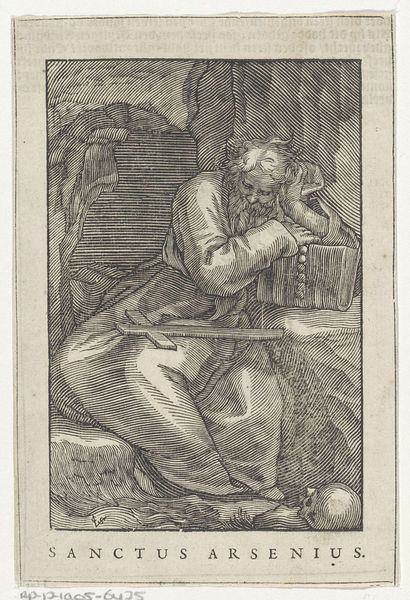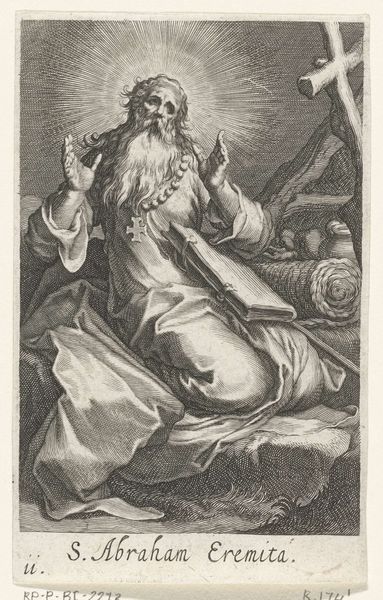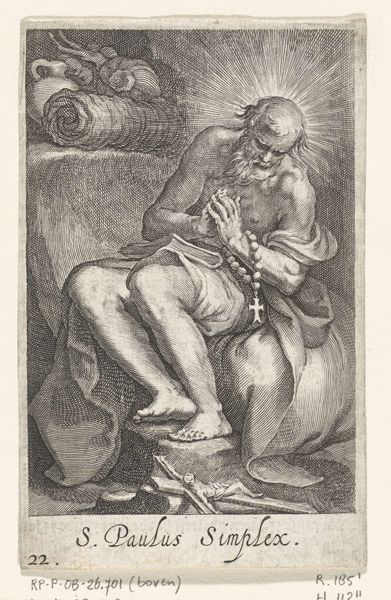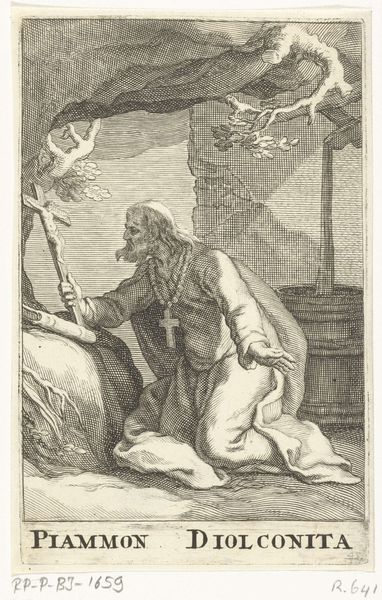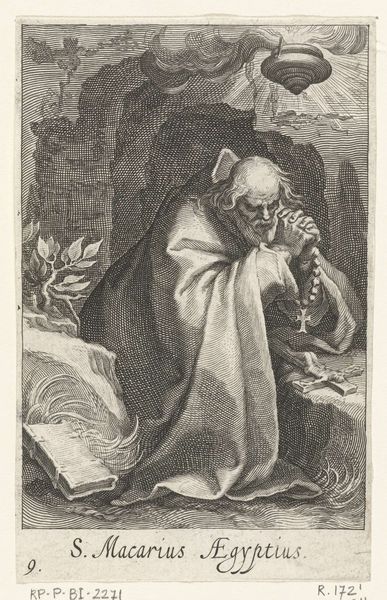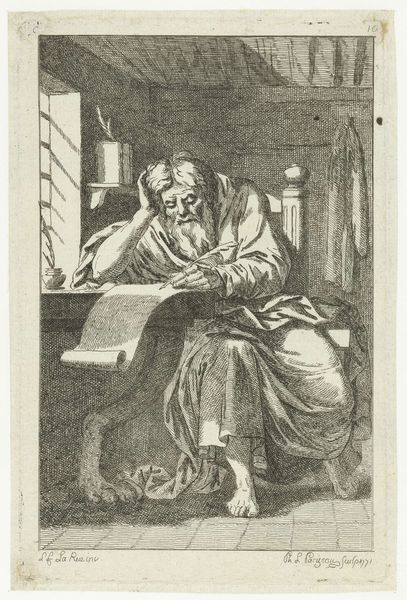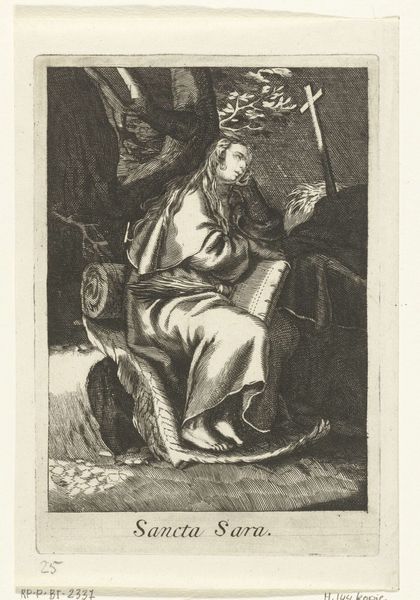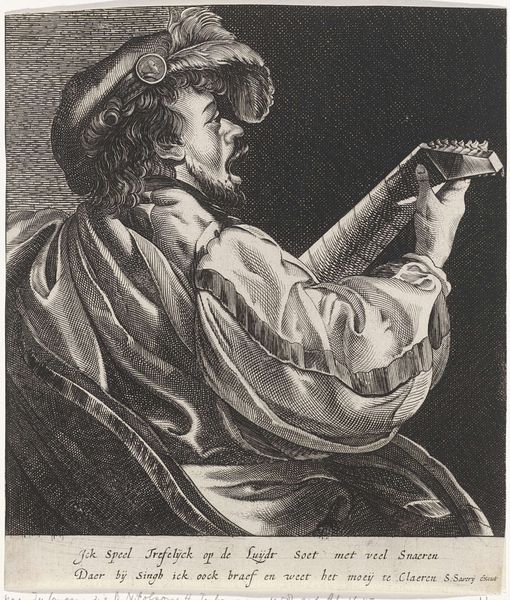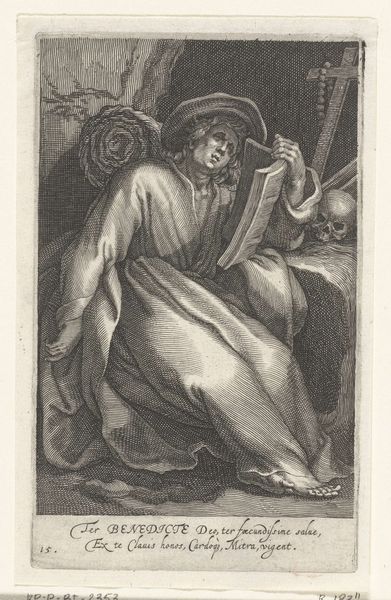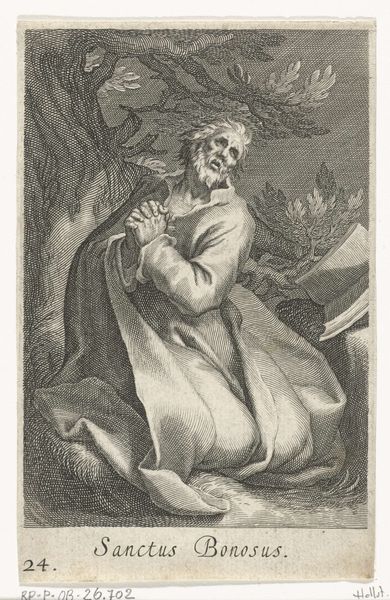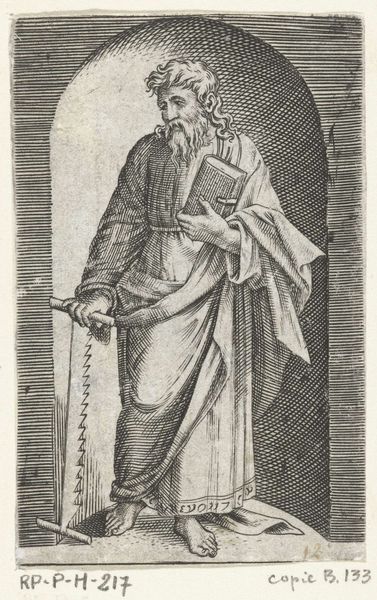
engraving
#
portrait
#
baroque
#
old engraving style
#
figuration
#
line
#
history-painting
#
engraving
#
monochrome
Dimensions: height 144 mm, width 90 mm
Copyright: Rijks Museum: Open Domain
Curator: This engraving, created by Boëtius Adamsz. Bolswert between 1590 and 1619, is titled "Heilige Arsenius de Grote als kluizenaar," or "Saint Arsenius the Great as a Hermit." Editor: It strikes me immediately as a stark meditation on mortality, and a very somber one. The monochrome palette emphasizes the gravitas, that’s for certain. Curator: Absolutely. The artist utilizes the line technique with precision, creating a dramatic contrast between light and shadow that defines the contours of Saint Arsenius and the objects around him. You’ll note the placement of the skull in the composition’s lower-right corner. Editor: Yes, and how Bolswert situates Arsenius within the cave; it reinforces his choice of a reclusive existence and the rejection of worldly affairs in favor of devotion. Representations like these offered a public model. The image is a call to the Baroque-era audience to examine its morality. Curator: I see Bolswert creating semiotic weight here through strategic choices of medium. The detailed lines and calculated chiaroscuro are essential visual devices—and it must be emphasized—entirely deliberate choices to articulate spiritual profundity within this printed picture. Note the beads and book, each precisely depicted. Editor: We must also remember the socio-political conditions that shaped the creation and reception of such works. Religious imagery like this, particularly in the context of the Dutch Republic, carries considerable significance as part of ongoing, public reformation. How are our actions shaping what is inherited by the future, to rephrase it as a question instead. Curator: I see this image as timeless because the lines communicate depth beyond historical events— the introspective posture of Saint Arsenius and the symbolism of the skull go to deeper structural dimensions beyond culture. It's existential more than historical for me. Editor: I grant that its austere quality is appealing; ultimately, what moves me is how an artwork can make audiences reflect, then and now, on what constitutes a meaningful life beyond any canvas, printing plate or sociopolitical environment.
Comments
No comments
Be the first to comment and join the conversation on the ultimate creative platform.
